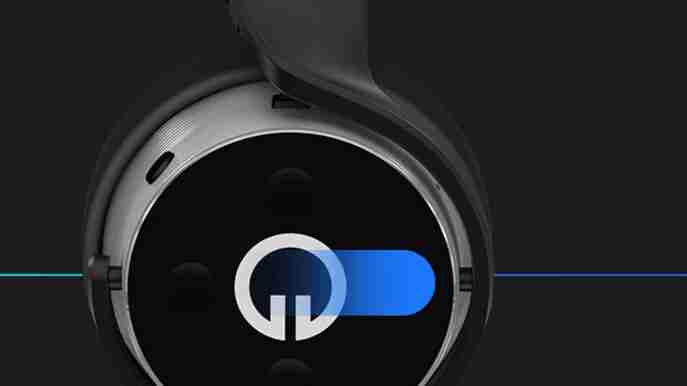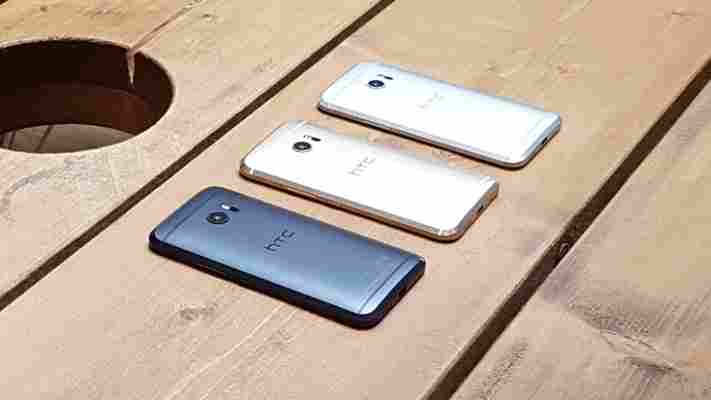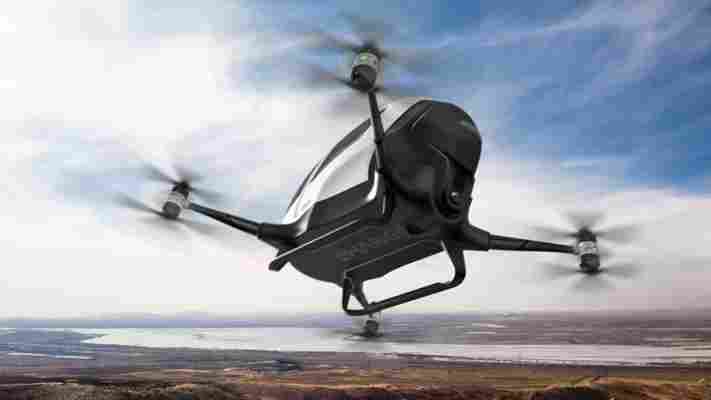Twitter takes another stab at music by investing in Muzik social headphones
Twitter shut down its #Music discovery service in March last year but it is bravely taking another step into the entertainment world with an investment in socially-driven headphone startup Muzik .

The wireless Muzik headphones, which are yet to launch, pair with the company’s app to enable users to discover, catalogue and share their music, all with a touch of their cans.
You assign hotkeys that you can swipe or tap, and Twitter enjoys a deep integration so you can share your favorite clips straight to your followers.
Musik will also automatically pull in images from Google Street View, your location, the weather and time so you can capture your music moments.
The $299 product has been in development since 2012 and will be demoed at CES before it starts shipping in May , although right now there isn’t an option to buy.
An ear bud, sports version is also on the way, costing $199.
This is the social network’s fourth investment via its Twitter Ventures arm , having put cash behind live event tech, mobile location marketing and the mobile OS Cynanogen , but this marks its first into hardware.
Unlike Google Ventures, whose most frequent investments since 2009 have been in life sciences , Twitter has so far put money into areas that fit closely with its core business.
Twitter Ventures only went live in 2015 so we can expect more of its VC cash to pour into startups, although it’s playing with a lot less money than Google has at present.
Although #Music failed to make sense to Twitter users, perhaps a more close integration with a headphone manufacturer will yet make it a place for discovering and sharing your favorite tunes.
➤ Twitter Invests In Muzik, a High-End Headphone Startup [Re/code]
One week with the excellent HTC 10 and I still can’t quite work out why I would buy one
HTC’s recently launched ‘HTC 10’ smartphone is everything on paper that a huge number of smartphone buyers should want.

It’s got an all-metal body and microSD expansion, it has a great camera, and the audio performance is pretty solid too.
Add in that HTC’s worked to cut back on consumer confusion throughout the Android OS and what you have is a leaner, meaner version of HTC’s previous ‘One’ range handsets with a better camera, improved overall performance and some other worthwhile software tweaks.
Credit: Ben Woods
And as I said in the initial hands-on , they’re upgrades that make a lot of sense at first glance – and now in more extended testing too.
However, after having the device for nearly a week – and despite it performing admirably in most areas – I’m still not sure who’s going to walk into a phone shop and walk out with an HTC 10.
First up, anyone who wants a slim and light phone isn’t going to – it may taper at the edges, but at its fattest point it’s 9mm thick, so it’s no contender for ‘slimmest smartphone’ by a long shot. To put that in context, the current iPhone is nearly a full 2mm thinner and the Galaxy S7 Edge measures up at 7.7mm.
It might not sound like a lot, but put it alongside something even thinner like the Huawei P9 (below, 6.95mm) or Oppo F1 Plus (which is significantly cheaper) and it looks positively chunky.
To me, it’s essentially the same chassis found on the One M9 and M8 handsets that came before it, albeit with chamfered edges. I’ve said it before , and really didn’t want to say it again, but it’s time HTC put the overarching design out to pasture – or at least significantly revamped it. It’s not even one that has won it many buyers (relatively) as the models have progressed .
The UltraPixel camera setup has returned too – and it’s the best camera HTC’s squeezed into one of its handsets, but I’m still not sure it’s the best camera on a smartphone.
Using default settings (yes, there are plenty of manual options to play around with too, if you’re inclined) and putting the resulting images side-by-side with ones taken on a Galaxy S7 Edge and they look less impressive.
In some situations, as you can see in the test shots below, the HTC 10 managed to let a little more light into the images but the end result was a less saturated (and less accurate to actual conditions) sky color.
On macro shots, the 10 achieved the ever-popular bokeh effect is easier to achieve than with the S7 Edge, but again, in my testing the resulting colors just aren’t quite right and I prefer the crispness of the Samsung’s image.
Add in that the HTC 10’s main camera was slower to focus and capture for almost every shot and the potential benefits just don’t add up to me. Not slow, but slower.
Of course, if I was comparing two completely different priced phones, this wouldn’t really be fair, but I’m not. The HTC 10 has to woo potential S7/S7 Edge buyers too and comes in just as expensive. It needs to be definitively better, and it’s just arguably not. HTC would, no doubt, point to its DxO benchmark score of 88 for the camera, putting it at the top of the charts.
I would point out that the S7 Edge got the same score, however.
Don’t misunderstand, both are excellent cameras to have in your phone, but if you’re a buyer choosing between the two, the HTC certainly doesn’t blow everything else out of the water.
This is really the crux of the problem for me with the HTC 10. I can’t point to a single feature and say, “yes, you should definitely buy it if you want x.” You should buy it if you want a phone that’s solid in almost every area though perhaps.
Sure, the audio output is solid too – it’s loud enough for occasional usage but if talk of a dedicated sub have gotten you excited, you’re likely to be disappointed. Most people use headphones anyway, with speaker use restricted for short bursts in the kitchen, or perhaps the shower.
Unbelievably, that’s a use case where the S7 Edge makes more sense for me too – it’s waterproof, so easy to pop inside the shower for an uninterrupted morning podcast playback without having to worry about it getting damaged. That the HTC 10 is loud enough to leave outside of the shower and still be audible doesn’t really seem a lot to shout about in comparison.
Really, it’s the same story throughout. It doesn’t struggle with everyday tasks or gaming, but then I wouldn’t expect a $700 to falter under a little multi-tasking. It doesn’t have a class-leading battery life – it’s perfectly fine for a moderate day’s usage (and the quick charge option is handy if you’re using the original cable and charger) but it’s a smaller power pack than some of its rivals. I’m yet to see a flagship that can challenge the Huawei Mate 8’s battery life .
I welcome the more ‘vanilla’ Android OS too, with de-duped apps causing less confusion and a highly customizable home screen setup, but removing confusing elements from a custom UI isn’t really a reason I’d buy a phone.
What people might forget about HTC is that smartphones aren’t the whole business, the company’s also making significant bets on VR with the HTC Vive and other non-smartphone-related operations. That’s a pretty exciting future to be mulling.
That’s exactly why I think it’s time for something new in next year’s HTC flagship. It’s time to lose that one-piece metal chassis and trade it in for something newer. To be more daring. To take a bigger risk.
Back at the HTC One M8, I questioned whether the bump in specs and iterative approach would be enough to reinvigorate sales , and still two flagships later the phone forces me to ask the same questions, essentially.
HTC fans will love the HTC 10 – it’s the best flagship the company has made, be in no doubt, and the camera is significantly better than previous years.
However, for any ‘regular’ buyer putting the HTC 10 alongside similar priced handsets, I just can’t see how the right decision would be to buy the ’10’ – unless you actively dislike the iPhone or Samsung. Alternatively, look down one price level and you’ll find handsets like the Moto X or the cloud-integrated Robin , which gives a hint at where smartphones are headed. Then there’s OnePlus, Oppo, and a whole other raft of options to consider too.
The HTC 10 is up against the best phones ever made this year, and while it’s the best HTC money can buy, it’ll probably appeal to fans more than the mainstream.
Ehang will test the world’s first passenger drone in Nevada this year
Chinese firm Ehang took the world by storm when it unveiled its electric passenger drone at CES in January. Now, it’s received clearance and can begin testing the 184 in Nevada later this year.

The company partnered with the Nevada Institute for Autonomous Systems (NIAS) and the Governor’s Office of Economic Development (GOED) to secure regulatory approval for the Ehang 184.
The company says its autonomous drone will be able to take off vertically and carry a passenger for up to 23 minutes at an altitude of 11,500 feet going 63mph to their destination with no input other than the destination.
Ehang will have to prove to the Federal Aviation Authority (FAA) that its drone is safe to use before it can begin operating in a wider capacity. It conduct its trials at the FAA’s unmanned aircraft systems test site in Nevada.
But don’t expect to hop into a 184 for a quick commute downtown anytime soon. Given all the safety considerations for passengers and fellow drone users that need to be tested for, it could likely take years before Ehang’s personal autonomous aerial vehicle is fully cleared for take-off.
